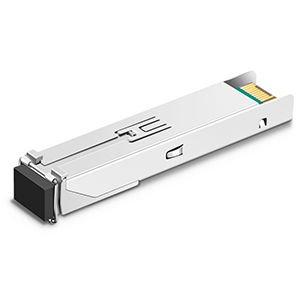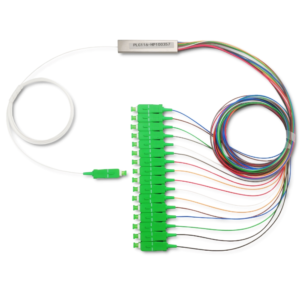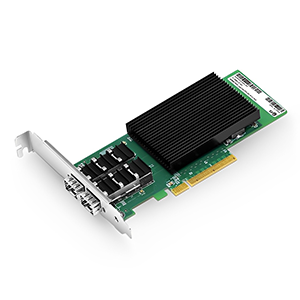As a technology enthusiast who focuses on the field of optical fiber communications, I am very fascinated by the functions and application areas of Dark Fiber. In this article, I will introduce you to the basic principles, advantages and importance of Dark Fiber in meeting the growing demand for high bandwidth. We will also explore the security and privacy benefits of Dark Fiber, as well as its practical application cases in areas such as data centers, finance and telecommunications industries.
Introduction to Dark Fiber
Definition and rationale:
Dark Fiber refers to unused, unilluminated optical fiber transmission lines. It refers to the optical fiber network infrastructure that has been laid but has not yet been utilized by optical signals. The opposite of “dark” is “bright” optical fiber. Bright optical fiber refers to the optical fiber that has been occupied by optical signal transmission.
The basic working principle of Dark Fiber is to use optical fiber as a transmission medium to transmit data by sending and receiving optical signals. Optical fibers maintain the propagation of optical signals within them through internal reflection and refraction, and utilize the characteristics of light to achieve high-speed, long-distance data transmission.
In general, Dark Fiber has important application value in the field of optical fiber communications. It provides a flexible and scalable communications infrastructure to meet growing bandwidth demands, supports data center interconnection and private network connections, and provides network disaster recovery and redundancy capabilities. By rationally utilizing Dark Fiber, high-speed and reliable data transmission and communication services can be achieved.
Dark Fiber’s advantages and application areas
Security and Privacy:
Dark Fiber has some security and privacy advantages compared to public fiber optic networks, mainly reflected in the following aspects:
-
Data privacy: Dark Fiber provides a private communication channel without sharing fiber resources with other users. This reduces the risk of data leakage and eavesdropping, improving data privacy and security. In contrast, public fiber optic networks may have multiple users sharing the same fiber, so data may be more vulnerable to attacks and interference.
-
Isolation risk: Since Dark Fiber is a private optical fiber network, users can better control and manage their communication environment. This reduces the risk and disruption that can occur when sharing network resources with other users. In contrast, public fiber optic networks may have situations where other users are using network resources excessively or inappropriately, resulting in performance degradation or increased security risks.
-
Physical security: Dark Fiber’s physical connections are usually controlled and managed independently by users, and additional security measures can be taken to protect optical fiber transmission lines. This includes physical security measures such as encryption, firewalls and monitoring systems, as well as non-technical security measures such as contractual constraints and access controls. In contrast, public fiber optic networks may be subject to more physical attacks and interference, such as fiber optic cuts or wire tapping.
High bandwidth requirements:
Dark Fiber has the potential to be widely used in meeting the growing demand for high bandwidth, mainly reflected in the following aspects:
-
Data center interconnection: With the development of technologies such as cloud computing, big data, and artificial intelligence, high-speed, low-latency interconnection is required between data centers. Dark Fiber provides high-bandwidth transmission capabilities to meet the needs of large-scale data transmission between data centers.
-
Intra-enterprise communications: Many large enterprises have offices and branches distributed in different locations and require high-speed, secure communication connections. By using Dark Fiber, enterprises can establish private optical fiber networks to achieve high-bandwidth internal communications and data transmission.
-
Communication operator network: With the development of mobile communication technology and the deployment of 5G networks, communication operators need higher bandwidth transmission networks to support large-scale mobile data transmission. Dark Fiber provides the scalability and flexibility to meet the high bandwidth needs of communications operators.
-
Video streaming and online games: With the popularity of high-definition video streaming and online games, users’ demand for high bandwidth is also increasing. By using Dark Fiber, streaming providers and game developers can provide faster and more stable video and game transmission services.
Deployment and use of Dark Fiber
Optical fiber network construction:
The deployment of Dark Fiber involves the following main steps and points:
-
Network planning: Before deploying Dark Fiber, network planning needs to be carried out to determine the areas, nodes and connection requirements that need to be covered. This includes determining the path, length and capacity of fiber optic lines, etc.
-
Optical fiber laying: Once the network planning is completed, the fiber laying can begin. This involves laying optical fiber underground or aerially, usually requiring ground excavation or the erection of fiber optic poles and other facilities. During the laying process, care needs to be taken to protect the optical fiber from physical damage and environmental influences.
-
Optical fiber connection: After the optical fiber laying is completed, the optical fiber needs to be connected. This includes connecting optical fibers to transmission equipment (such as fiber optic switches or fiber optic transmission systems) as well as connecting optical fibers between different nodes.
-
Testing and debugging: After completing the optical fiber connection, testing and debugging are required to ensure the transmission performance and quality of the optical fiber. This includes testing fiber connections using fiber optic test instruments to check parameters such as signal strength, attenuation and loss.
Network expansion and upgrades:
Dark Fiber can be used for network expansion and upgrade to meet growing communication needs. Here are the main ways to leverage Dark Fiber for network expansion and upgrades:
-
New node deployment: By deploying new fiber optic nodes, the coverage and capacity of the existing network can be expanded. This involves laying new Dark Fiber in the areas that need coverage and connecting it to switches or transmission equipment in the existing network.
-
Capacity increase: By increasing the capacity of existing Dark Fiber, the growing bandwidth demand in the network can be met. This can be achieved by increasing the number of optical fibers or upgrading the transmission capacity of existing optical fibers.
-
Multi-path configuration: Using multiple Dark Fiber paths to connect nodes can improve the redundancy and reliability of the network. This configuration can be achieved by laying additional Dark Fiber on different paths and using network equipment for load balancing and path selection.
-
Technology upgrade: Dark Fiber can also be used to support the deployment of new communication technologies and protocols. For example, upgrade to higher-speed optical fiber transmission technology, such as 40Gbps, 100Gbps or even higher rates, to meet higher bandwidth needs.
Dark Fiber management and maintenance
Fiber monitoring and troubleshooting:
In order to ensure the stability and reliability of the Dark Fiber network, fiber monitoring and troubleshooting are required. The following are some commonly used methods and measures:
-
Fiber optic testing: Fiber optic testing is performed regularly to detect parameters such as signal strength, attenuation and loss. Fiber optic test instruments can be used to measure the performance of optical fibers and help determine if there are signal quality issues.
-
Fault location: When a fault occurs, fault location needs to be performed. This includes using fault location tools and techniques, such as fiber optic locators and OTDR (optical time domain reflectometry), to determine where and why the problem occurs.
-
Fiber optic maintenance: Perform regular fiber optic maintenance, including cleaning and maintaining fiber optic connectors and equipment. This prevents factors such as dust, dirt and damage from affecting fiber optic transmission.
-
Monitoring system: Deploy an optical fiber network monitoring system to monitor the status and performance of optical fibers in real time. This can help identify potential problems promptly and take appropriate steps to fix them.
Security management:
Dark Fiber’s security management is very important to protect the fiber optic network and the data transmitted. Here are some common security management measures:
-
Physical security: Take measures to protect the physical security of fiber optics, such as placing fiber optic cabling in a safe location to avoid damage or unauthorized access. This includes selecting appropriate laying paths, using protective casing and protective facilities, etc.
-
Data encryption: Encrypt the data transmitted through Dark Fiber to ensure the security of the data during transmission. Confidentiality and integrity of data can be provided using encryption protocols and algorithms such as VPN (Virtual Private Network) and TLS (Transport Layer Security).
-
Access control: Implement strict access control measures to restrict access to Dark Fiber networks and devices. This includes using authentication and authorization mechanisms, as well as monitoring and logging access activity.
-
Security audit: Conduct regular security audits to evaluate the security and compliance of the Dark Fiber network. This can help identify potential security risks and vulnerabilities and take appropriate corrective actions.
Dark Fiber commercial applications and case studies
Data Center and Cloud Services:
Dark Fiber is widely used in data centers and cloud service industries to support high-speed data transmission and storage needs. Here are some relevant applications and cases:
-
Data center interconnection: Dark Fiber is widely used to connect different data centers to achieve data backup, replication and disaster recovery. By using Dark Fiber, data centers can achieve high-capacity, low-latency interconnection and provide high-reliability and high-availability services.
-
Cloud service providers: Cloud service providers use Dark Fiber to connect data centers and cloud servers to support fast and reliable data transmission. This can meet the needs of cloud service users for large-scale data processing and storage, and provide a high-performance and low-latency cloud service experience.
-
Large-scale data transmission: Dark Fiber provides high-bandwidth and high-rate transmission capabilities and is suitable for large-scale data transmission scenarios. For example, used to transfer large files, backup and restore data, remote data storage, etc.
Financial and telecommunications industries:
Dark Fiber also has important application cases in the financial and telecommunications industries to meet the needs for high-speed, low-latency communications. Here are some relevant applications and cases:
-
Financial transactions: In financial transactions, low-latency communication is crucial for high-frequency trading and algorithmic trading. Financial institutions use Dark Fiber to establish direct connection networks to achieve fast and stable transaction data transmission, reduce transaction delays, and improve transaction efficiency.
-
Telecom operators: Dark Fiber provides telecom operators with the ability to expand and upgrade their networks. Operators can use Dark Fiber to connect base stations and data centers to support high-speed, high-capacity mobile communications and data transmission.
-
Internet Service Providers (ISPs): ISPs can use Dark Fiber to expand their network coverage and capacity to meet the growing demand for Internet access. This includes the provision of high-speed broadband and fiber-to-the-home (FTTH) services.
-
Data Center Interconnect: Interconnect communication between data centers in the financial and telecommunications industries is critical for real-time data sharing and collaboration. Dark Fiber provides high-speed, low-latency connections and supports secure, high-bandwidth data center interconnection.
In actual cases, many large data centers, cloud service providers, financial institutions and telecom operators use Dark Fiber to meet their high-speed data transmission and communication needs. These application cases demonstrate the importance of Dark Fiber in providing reliable, high-performance network infrastructure.
The future development trend of Dark Fiber
5G Networks and IoT:
Dark Fiber will play an important role in the era of 5G networks and the Internet of Things, supporting large-scale connections and high bandwidth requirements. Here are some relevant trends:
-
Massive connections: 5G networks and the Internet of Things will bring a large number of connected devices, requiring high-capacity and high-density data transmission. Dark Fiber provides high-bandwidth and low-latency transmission capabilities that meet these needs, supporting large-scale connections and real-time data transmission.
-
Edge computing: As the number of IoT devices increases, edge computing will become more important. The deployment of Dark Fiber can place computing and storage resources at the edge close to users and devices, reducing data transmission delays and bandwidth consumption.
-
5G infrastructure: The deployment of 5G networks requires a large amount of infrastructure, including connections between base stations and data centers. Dark Fiber provides high-speed, low-latency transmission capabilities and supports the construction and operation of 5G infrastructure.
Fiber optic technology advancements:
The future development of Dark Fiber is also closely related to the advancement of optical fiber technology. Here are some of the future trends in fiber optic technology advancements:
-
Higher transmission rate: With the continuous innovation and improvement of optical fiber technology, Dark Fiber will be able to achieve higher transmission rates in the future. New modulation and multiplexing technologies, such as multi-level modulation, multi-carrier modulation and spatial division multiplexing, will increase the data rate of optical fiber transmission.
-
Lower signal loss: Fiber optic signal loss is one of the factors that limits transmission distance and capacity. Future optical fiber technology will be dedicated to reducing signal loss and improving optical fiber transmission performance by improving core materials, reducing attenuation and scattering.
-
New optical fiber architecture: The research and development of new optical fiber architecture will further improve the performance of Dark Fiber. For example, new structures such as hollow-core fiber and multi-core fiber can provide higher bandwidth and lower latency.
-
Fiber optic network automation: As the scale and complexity of fiber optic networks increase, automation technology will play an important role in the management and maintenance of Dark Fiber. Automation can improve network efficiency and reliability, reducing manual intervention and troubleshooting time.
Summarize:
Dark Fiber, as an unused optical fiber resource, has huge potential and application value. By understanding the basic principles, deployment and usage of Dark Fiber, we can better utilize these unused optical fiber resources to meet the growing demand for high bandwidth.
With the development of 5G networks and the Internet of Things, Dark Fiber will play a more important role in supporting large-scale connections and high bandwidth requirements. It is believed that in the future, Dark Fiber will continue to promote the advancement of optical fiber technology and achieve higher transmission rates and lower signal loss. I hope this article has provided you with valuable information, allowing you to better understand Dark Fiber and achieve greater success in the field of fiber optic communications.
- What is the difference between dark fiber and normal fiber?
- What is the use of dark fiber?
- What are the disadvantages of dark fiber?
- What is the difference between DWDM and dark fiber?
- Why is it called dark fiber?
- Why is it called dark fibre?
- Is dark fiber better than VPN?
- Is dark fiber expensive?
- Is dark fiber good?




